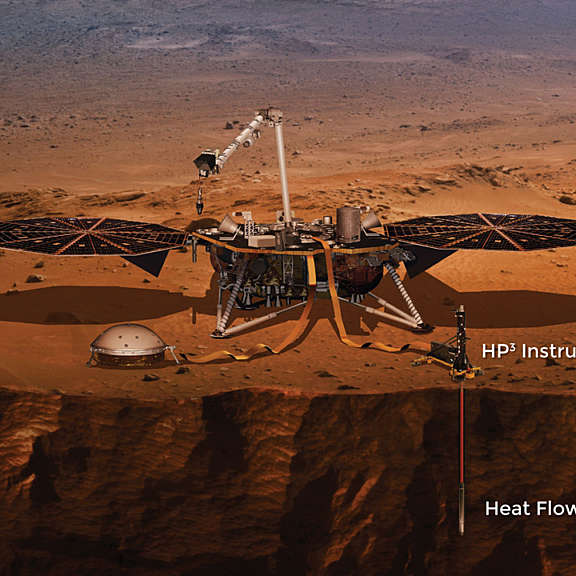All
All
Stories, updates, insights, and original analysis from The Planetary Society.
How we test spacecraft before launch
The array of space-simulating test facilities a spacecraft tours through before it can blast off of Earth.
Why we need plutonium power for space missions
Spacecraft need power to reach the dark, dusty, distant locales of our solar system. Safe, non-weapons-grade plutonium-238 provides that power when solar energy can't cut it.
Rosetta’s Ancient Comet
Rosetta is a European Space Agency mission with contributions from its member states and NASA. Operating such a complex mission with its 11 instruments and Philae lander is a success story in itself, but Rosetta’s greatest success is the science it delivered.
Treasure Hunting With Hayabusa2
IN THE EARLY hours of 22 February, light was just beginning to brighten the campus of JAXA’s Institute of Space and Astronautical Sciences (ISAS) in Kanagawa, Japan. It should have been a quiet time, but the Hayabusa2 control room was packed with people. We were about to land on an asteroid.
How to Send a Camera to Mars
The next Martian explorer, Mars 2020, currently exists as a robotic skeleton at NASA’s Jet Propulsion Laboratory. Teams across the world are working diligently to construct the instruments that will adorn the rover, inside and out, and thereby give it the tools it needs to explore.
InSight update, sols 43-83: Instrument placement complete
InSight has placed its second science instrument on the ground and set it free. Now it's time to bury the heat probe in the soil.
Why are there no stars in most space images?
Look up at space at night from a dark location and you can see innumerable stars. Why, then, do photos of so many things in space show black space, devoid of stars?
InSight Update, sols 25-42: Seismometer sensors working!
Engineers have leveled the seismometer and made progress on adjusting the position of the tether so that it doesn't interfere for the experiment. Most significantly for the mission, they have balanced the Very Broad Band sensors -- 3 of SEIS’ 6 seismic sensors -- and confirmed that they are generating good data.
What to Expect When InSight Lands on Mars
If all goes well, anxious space fans on Earth will learn of a successful InSight landing on Mars on Monday, 26 November 2018, at 19:53 UTC. Here's a preview of all the landing day events.
Mastcam-Z Team Blog: A Special Team Photomosaic
Mastcam-Z will help the Mars 2020 rover explore the surface of Mars. Dozens of amazing scientists and engineers from across the globe contribute to the development of Mastcam-Z. This year, the team photo was taken with our very own Mastcam-Z testbed unit.
Generation Zero of JPL Planetary Rovers
The Jet Propulsion Laboratory has a fabled history of planetary rovers. But how do you start such a program?
Mastcam-Z team blog: We've got flight hardware!
Right after the last Mastcam-Z team meeting a year ago (link here to last two blog posts), our team finalized the design of the cameras, and then the fantastic voyage of creating Martian panoramic zoom cameras began.
Book Excerpt: The Design and Engineering of Curiosity: How the radioisotope power system works
Readers, colleagues, friends: it's finally happened. My first book is finally out in the world. Here's an excerpt that explains the design and operation of Curiosity's MMRTG, (it also applies to the future Mars 2020 rover power supply).
MarCO: CubeSats to Mars!
MarCO or Mars Cube One is an experimental mission that is sending two tiny spacecraft along with InSight to Mars. If successful, they will relay real-time telemetry from InSight to Earth during the landing.
‘SuperCam’ Update: Multi-purpose Instrument Coming Together for 2020 Launch to Mars
Excitement is building within the SuperCam team as the instrument enters the final stages of assembly and testing toward an anticipated launch aboard NASA’s Mars 2020 rover.
Space grade electronics: How NASA’s Juno survives near Jupiter
Take a look at how electronics of spacecraft are built to survive the harshness of space environments.
Automating Science on Mars
Since 2016, NASA’s Curiosity Mars rover has had the ability to choose its own science targets using an onboard intelligent targeting system called AEGIS.
Maintaining the health of an aging Mars orbiter
NASA has announced changes to how engineers are operating Mars Reconnaissance Orbiter in order to prolong its life as long as possible, long enough to support the Mars 2020 rover mission.
Engineering Qualification Model confirms performance of the Mastcam-Z!
Just this past week, assembly of the Mastcam-Z EQM was completed, and we saw for the first time what one of our Mars zoom cameras would really look like.
Reconstructing the Viking '75 Mars lander Surface Sampler Collector
Viking enthusiast Tom Dahl has created an animation demonstrating the operation of the Viking lander's Surface Sampler Acquisition Assembly, or


 Explore Worlds
Explore Worlds Find Life
Find Life Defend Earth
Defend Earth


 Sun
Sun Mercury
Mercury Venus
Venus Earth
Earth Mars
Mars Jupiter
Jupiter Saturn
Saturn Uranus
Uranus Neptune
Neptune Small Bodies
Small Bodies


















